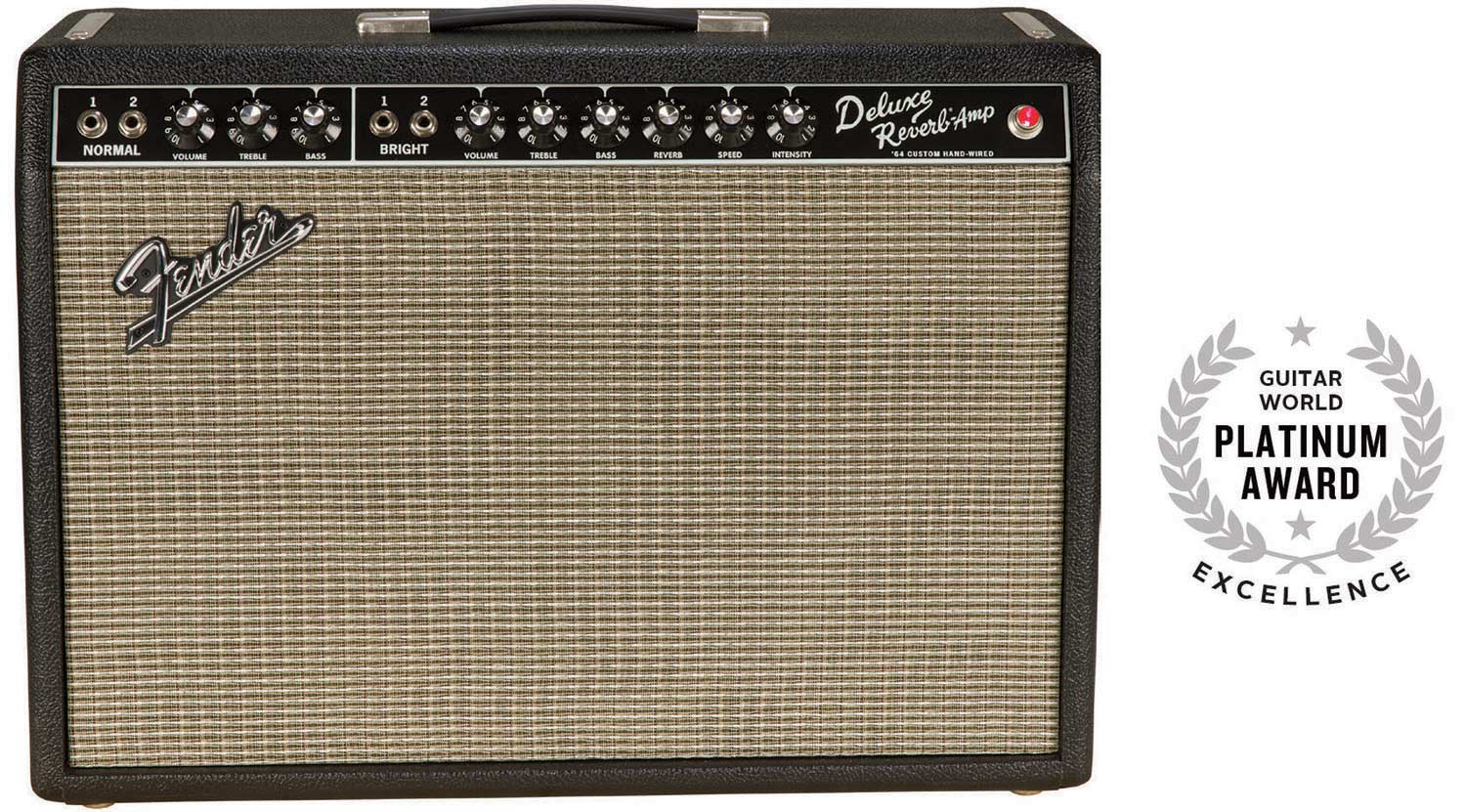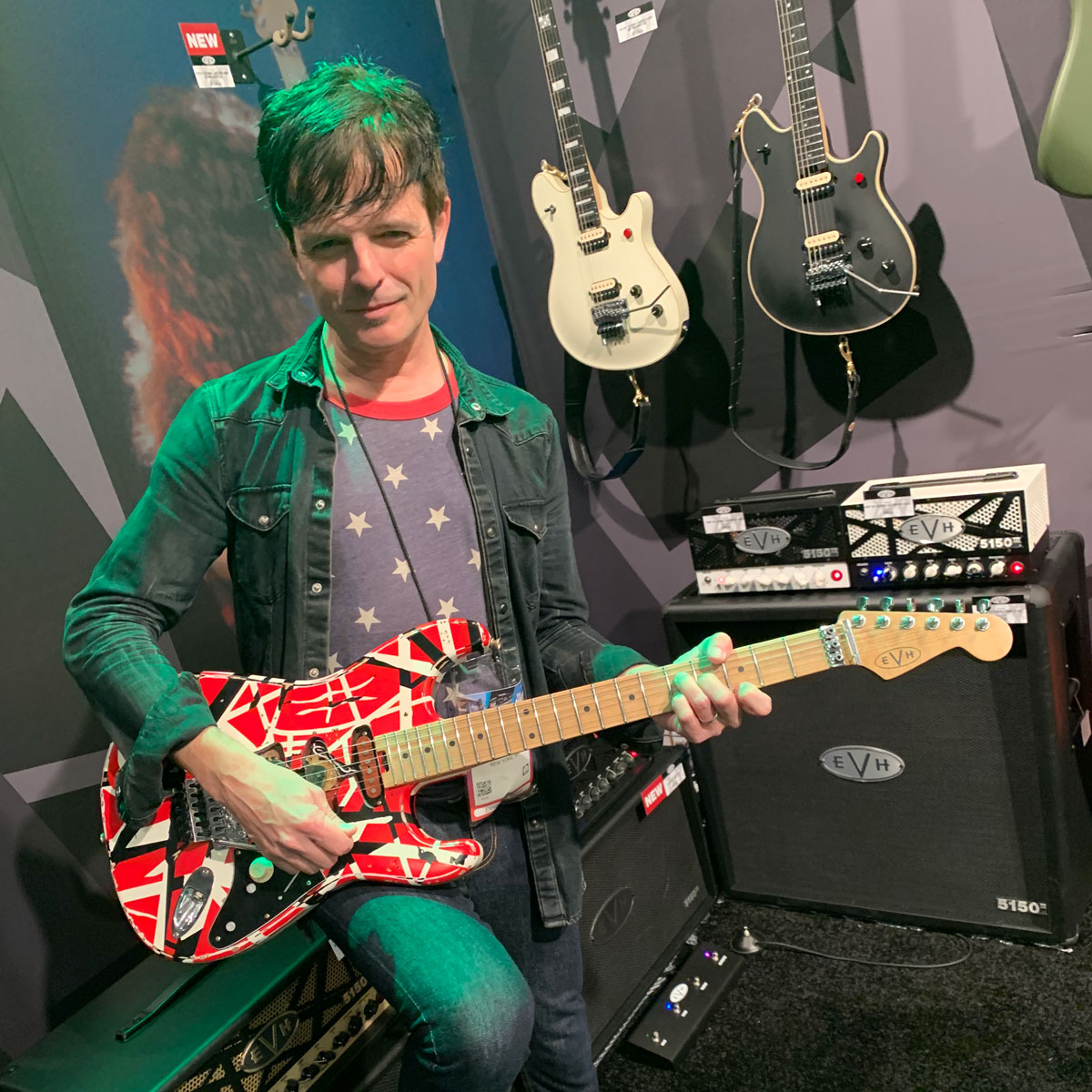Review: Fender '64 Custom Deluxe Reverb Amp
The hand-wired Fender ’64 Custom Deluxe Reverb is an instant classic.

Since its introduction more than 50 years ago, the Fender Deluxe Reverb has enjoyed an enduring legacy as one of the most iconic amplifiers among guitarists. Why? It’s a perfect trifecta of an amp for its compact size, lighter weight and moderate-output volume—making it the ideal go-to amplifier for club gigs and recording sessions, especially if you love glassy clean tones and cranked-up overdrive.
Throughout the years, the Deluxe Reverb has received countless modifications by the company and amp-tweakers alike because its venerable circuit can be endlessly fine-tuned for even more definition, headroom and dynamic response. But this time around, it appears Fender has really dialed in all the best elements of componentry and classic “blackface” tone into the hand-wired ’64 Custom Deluxe Reverb, which—in my opinion—is by far the finest iteration of this beloved amp.
FEATURES The ’64 Custom Deluxe Reverb has a certain gravitas, mostly because its ultra-thick textured vinyl covering and gently aged silver grille clothe almost make it look like a perfectly preserved vintage example found in someone’s attic. However, peeking inside, it’s immediately clear the superb build-quality, enhanced mods and premium upgrades will ensure that this 20–watt amp performs flawlessly for many years. Fender begins by constructing the cabinet from solid pine (as opposed to Baltic birch), which gives the amp a much lighter weight and more resonance in the low end.
The cab also houses a 12–inch Jensen C-12Q ceramic speaker with a smaller magnet that aims to closely replicate the breakup from an original Sixties-era Jensen. What sets it apart from Fender’s other Deluxe Reverb reissues is its modified all-tube hand-wired AB763 circuit that’s neatly arranged, with braided reverb cabling. Fender’s Pure Vintage Blue Tone capacitors are employed to accurately recreate the sweetened “blackface” tone of the original Blue Astron capacitors. Also, the tube-driven reverb and bias-modulated tremolo can now be accessed on both the Bright and Normal channels, which incidentally, are now voiced differently for more sparkle and warmth, respectively.
PERFORMANCE The ’64 Custom Deluxe Reverb is a culmination of attention to detail that clearly shows Fender was extremely thoughtful in every aspect of this amp from top to bottom. I’ve played countless Deluxe Reverbs, and this ’64 is the smoothest and most pleasing in its nuanced tonal response and touch-sensitivity, but it’s also Fender’s most vintage-sounding “blackface” amp. The Bright channel is no longer harsh and has a great deal of compressed snappiness that’s perfect for humbucker-equipped guitars—because here, the sizzling overdrive emerges quickly when turning up the volume knob and is incredibly warm and crunchy.
The built-in spring reverb is immersive and gorgeous, adding dimension to the sound rather than swallowing it up. I also love the tube-biased tremolo circuit for its natural vibrato effect. On lower intensity settings, it can undulate in the background for a slow pulsating heartbeat, or increased to achieve throbbing musical stutter. The Normal channel is my favorite; it has a higher clean ceiling, which is perfect for pedals, but it also has more rounded warmth and complex harmonics that makes single-coil guitars sing and twang.
• STREET PRICE: $2,499.99 MANUFACTURER: Fender, fender.com
Get The Pick Newsletter
All the latest guitar news, interviews, lessons, reviews, deals and more, direct to your inbox!
• The tube-driven spring reverb and tremolo can now be utilized on the Normal and Bright channels.
• The Jensen C-12Q is a well-suited speaker for full sparkling cleans at lower volumes and crisp, overdriven breakup at increased volume.
• THE BOTTOM LINE The hand-wired Fender ’64 Custom Deluxe Reverb is, without a doubt, an instant classic with authentic “blackface” tone and upgraded components that make it the quintessential amp to own for the next 50 years.
Paul Riario has been the tech/gear editor and online video presence for Guitar World for over 25 years. Paul is one of the few gear editors who has actually played and owned nearly all the original gear that most guitarists wax poetically about, and has survived this long by knowing every useless musical tidbit of classic rock, new wave, hair metal, grunge, and alternative genres. When Paul is not riding his road bike at any given moment, he remains a working musician, playing in two bands called SuperTrans Am and Radio Nashville.
“There’s no doubt in my mind that Mark Sampson was the father of the boutique amp revolution”: An interview with the late, great Mark Sampson, the trailblazing amp designer behind Bad Cat and Matchless
“If you’ve ever wondered what unobtanium looks like in amp form, this is it”: Played and revered by Stevie Ray Vaughan, Carlos Santana, and John Mayer, Dumble amps have an almost mythical reputation. But what's all the fuss really about?






![[from left] George Harrison with his Gretsch Country Gentleman, Norman Harris of Norman's Rare Guitars holds a gold-top Les Paul, John Fogerty with his legendary 1969 Rickenbacker](https://cdn.mos.cms.futurecdn.net/TuH3nuhn9etqjdn5sy4ntW.jpg)



